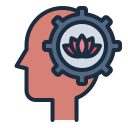
Sound Meditation for Mental Focus
Today’s chosen theme: Sound Meditation for Mental Focus. Tune your attention with gentle tones, steady rhythms, and mindful listening to enter deep, clear concentration. Explore practical, science-informed methods, try the exercises, and share your results with our community.


How Sound Meditation Shapes Concentration
Research suggests that sound meditation can increase alpha activity and reduce default mode rumination, creating a calmer baseline for focused work. By returning attention to a tone, you practice the skill of reorienting, strengthening neural pathways involved in sustained attention.
How Sound Meditation Shapes Concentration
Simple, predictable rhythms demand less cognitive parsing than complex melodies or lyrics. A soft drone, a singing bowl, or pink noise can gently occupy auditory channels, lowering distraction while providing a steady anchor that keeps your attention from drifting aimlessly.
Your 10-Minute Starter Practice
Pick a gentle, non-lyrical sound: a singing bowl loop, low-volume pink noise, or a simple drone. Favor warmth over brightness and keep volume modest. The best anchor is one you like, because comfort invites consistency and consistency quietly builds stronger attention.
Minutes 0–2: settle posture, breathe naturally, notice the sound. Minutes 2–7: link breath to the tone; label distractions kindly and return. Minutes 7–9: widen awareness while keeping the sound at your center. Minute 9–10: set a crisp work intention, then begin.
Before you start, name a single task and a tiny success metric, like finishing one paragraph. Afterward, rate focus one to ten and note one distraction you handled. These small reflections reveal progress patterns and help you iterate your sound meditation practice intelligently.
Tools, Space, and Sound Quality
Closed-back headphones isolate and highlight your anchor; open-back feel airy and reduce pressure fatigue. Small speakers can work if your room is quiet. Whatever you choose, prioritize comfort and a volume that remains gentle, so your nervous system associates sound with ease.


Tools, Space, and Sound Quality
Soft furnishings, curtains, and a rug reduce echo, helping tones feel closer and less smeared. Position speakers away from reflective surfaces when possible. Even a folded blanket behind your listening spot can tame harsh reflections and make focus-oriented sound noticeably more soothing.
Maya’s debugging flow with a soft drone
Maya, a developer, looped a warm, low drone while tackling a stubborn bug. Every time frustration surged, she breathed with the tone and returned to the code. The problem unraveled slowly, then suddenly, and she kept the track as her personal focus talisman.
Jorge’s study sprints and a gentle metronome
Preparing for exams, Jorge kept a nearly silent metronome ticking at sixty beats per minute. The steady pulse anchored his reading pace and steadied nerves. When anxiety rose, he matched two breaths to two beats, then resumed. His notes grew cleaner and retention improved.
Aisha’s writing rhythm with singing bowl breaks
Aisha drafted chapters in short intervals, starting each with a singing bowl strike. The fading resonance signaled presence; the silence afterward meant write. When she drifted, another gentle strike restored focus without pressure. She finished her outline early and kept the ritual for edits.


Advanced Sound Meditation for Deep Work
Play the anchor softly alternating between left and right channels. Notice the shift, label it, and return to the present tone. This gentle alternation can train flexible, deliberate redirection, so you learn to move attention on purpose rather than being moved by distraction.
Advanced Sound Meditation for Deep Work
Use a chime to mark equal counts, like four in, four hold, four out, four rest. If that feels tense, shorten counts. The cue removes mental counting, freeing you to focus on sensation while keeping breathing slow and supportive of clear, steady concentration.
Troubleshooting Your Practice
When the sound irritates you
Lower the volume until it feels like a friendly whisper. Try a warmer timbre, fewer high frequencies, or shorter sessions. Label irritation softly—“irritation, noted”—then return to the anchor. Comfort matters; the right texture makes sustained focus feel supportive rather than effortful.
When you get sleepy instead of focused
Brighten the sound slightly, add a gentle rhythm, and sit upright with good light. Try shorter, more frequent sessions and keep breaths a touch brisk. Drowsiness is information, not failure; adjust the stimulus until your attention feels lively, clear, and warmly alert.
When thoughts race and won’t settle
Broaden awareness to include the sound and body together, then narrow gently back to the tone. Name fast thoughts kindly and let them pass. Consistency matters more than intensity; brief daily practice teaches your attention to return without argument, pressure, or self-criticism.
